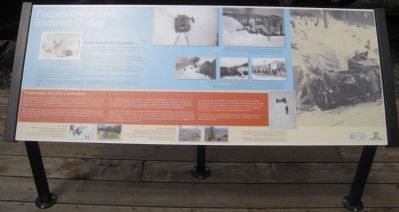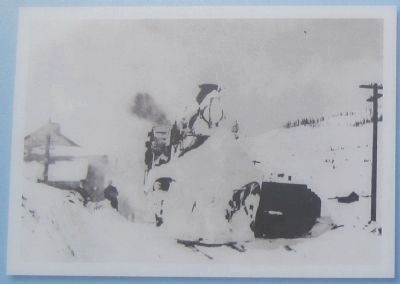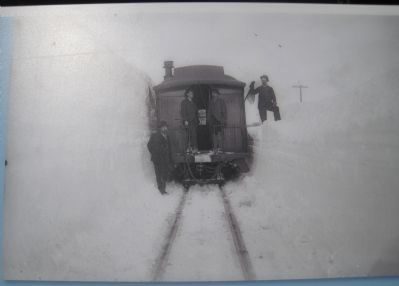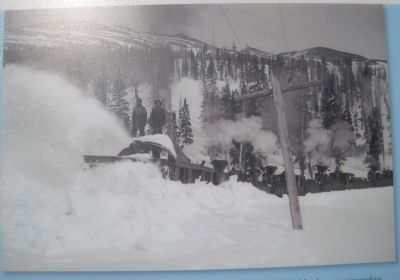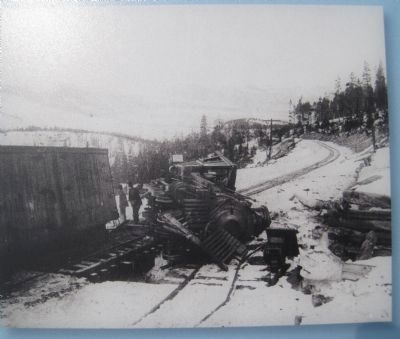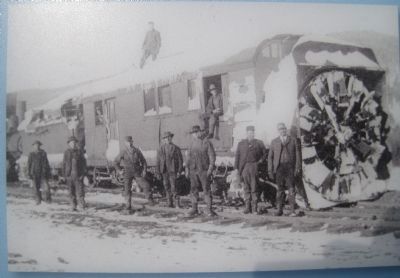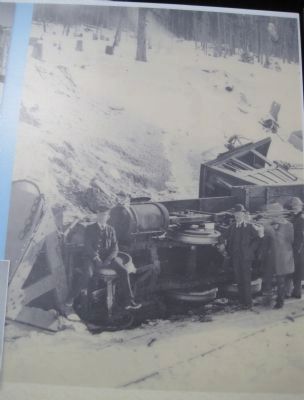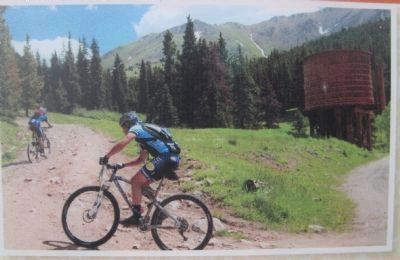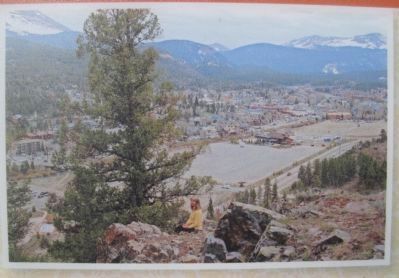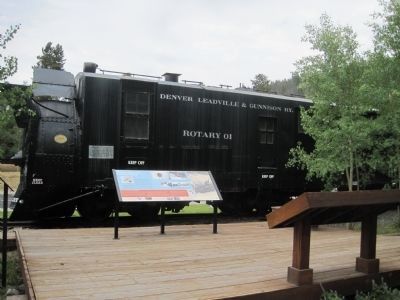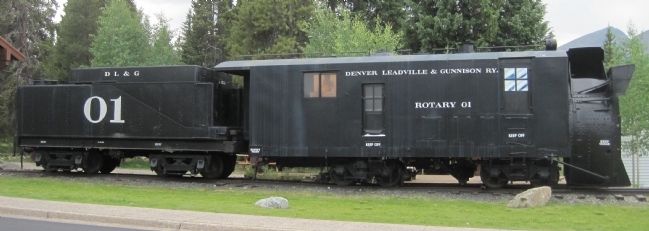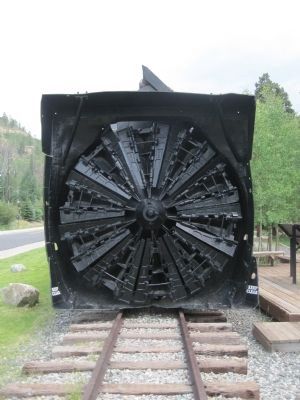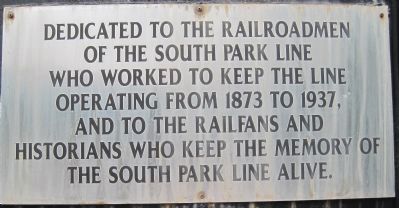Breckenridge in Summit County, Colorado — The American Mountains (Southwest)
Frozen Over and Snowed Under
Intense cold, high winds, drifting snow, and avalanches challenged railroaders all winter long. The endless gales prompted a standard joke in Como. Newcomer: “Does the wind always blow this way?” Old-time: “No, sometimes it blows the other way.”
To cope with the grueling winter days, the men “doubled up” on woolen underwear, shirts, pants, socks, overalls, and jackets. By the end of the day, the clothes would be frozen on their bodies. One old-timer remembered his grandfather coming home and standing by the stove to thaw out while his wife peeled off the frozen clothing.
Danger loomed constantly. Ice, snow, or rocks on the track could derail trains and cause deadly accidents. With little visibility, engineers plowed through the snow without stopping, using a “bucking” or “butterfly” plow like No. 9’s to push through the drifts. When deep snow forced the engine to stop, the engineer uncoupled from the train, backed up, and charged the drift.
He then threw the engine in reverse and continued “bucking” until he rammed his way through. Bucking required skill. It was easy to stall in the drift if the engineer did not reverse quickly enough.
Throughout the harsh winter, crews worked under an unwritten rule: make it happen. Railroaders were “on their own” when problems arose; they could not communicate with the dispatcher. So they dug their own way through drifts, made their own repairs, and did whatever else was necessary to keep the line moving.
A last resort: the rotary snowplow
All winter long, railroaders battled avalanches and tall drifts on Boreas Pass and in Ten Mile Canyon, a segment known as the “High Line.” In this ongoing struggle, the rotary snowplow was the railroaders’ secret weapon. Rotary No. 1 resembles the rotaries used on the High Line. This plow actually served on a narrow gauge railroad in Alaska. Over the years, the High Line operators generally had one rotary to call on in extreme snow conditions.
The rotary could not move along the tracks by itself; its engine was dedicated to propelling the large rotating blades on the front of the vehicle. The blades worked like a modern snow blower, blasting snow up to 30 feet on either side of the track. It often took as many as six or seven smoke-belching locomotives to push the 108-ton rotary snowplow along.
A crew of four operated the rotary. The pilot sat in front, behind the blades, where he had a clear view of the track. Over the roar of the engine and blades, the pilot used whistle signals to communicate with the engines
pushing the rotary. The rest of the crew consisted of an engineer and two firemen. The engineer and the pilot used bells and hand signals to communicate with each other over the machinery’s deafening noise.
A shift on the rotary could easily last more than twelve hours. Blowing snow often iced shut the plow’s doors, which had to be pried open from the outside. Sometimes the snow overwhelmed the rotary, bringing all progress to a halt. At that point, crews of “snow diggers” or “snow birds” attacked the towering drifts by hand, shoveling down to the height of the plow so the rotary could resume chewing through the snow. The snow diggers lived in box cars traveling wherever the rotary went.
Avalanches brought trees, boulders, and other debris onto the track, making the plowing harder. Sometimes, clearing the track required a blast of dynamite. Then the track needed to be repaired, adding extra time and expense. Railroaders liked to tell about the time the rotary encountered cattle killed in an avalanche. Legend has it when the rotary cut through the snow, it produced flying beef steaks.
The difficulty, danger, and length of winter operations took a financial toll on the railroad companies operating the High Line, no doubt contributing to the line’s eventual closure in 1937.
Erected by
Breckenridge Heritage Alliance and the Summit Historical Alliance.
Topics. This historical marker is listed in these topic lists: Railroads & Streetcars • Settlements & Settlers. A significant historical year for this entry is 1937.
Location. 39° 28.453′ N, 106° 2.448′ W. Marker is in Breckenridge, Colorado, in Summit County. Marker is on Boreas Pass Road (County Road 10) near South Main Street (State Highway 9). Touch for map. Marker is in this post office area: Breckenridge CO 80424, United States of America. Touch for directions.
Other nearby markers. At least 8 other markers are within walking distance of this marker. The Little Engine / Engine 9 Returns to Summit County (within shouting distance of this marker); Breckenridge, Colorado (approx. 0.3 miles away); Soldiers of the Summit (approx. half a mile away); Site of Argyle Dance Hall (approx. half a mile away); The Hearthstone (approx. half a mile away); Barney L. Ford (approx. half a mile away); St. Mary's Church (approx. half a mile away); Riverwalk - Blue River Restoration (approx. half a mile away). Touch for a list and map of all markers in Breckenridge.
Also see . . .
1. Wikipedia entry for Rotary snowplows. (Submitted on January 13, 2013, by Kevin W. of Stafford, Virginia.)
2. Breckenridge Heritage page for Rotary Snowplow Park. The rotary snowplow you see in the Breckenridge Rotary Snowplow Park ... is one of only five known
narrow-gauge rotaries still in existence. (Submitted on January 13, 2013, by Kevin W. of Stafford, Virginia.)
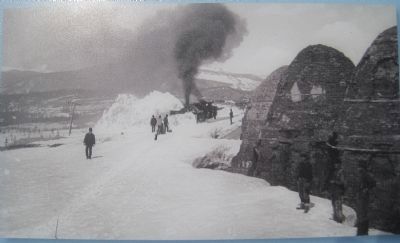
Photographed By Kevin W., July 4, 2012
5. Picture from the Frozen Over and Snowed Under Marker
Rotary snowplow clearing tracks east of Frisco near Hathaway-Lamping charcoal kilns that produced coke for blacksmiths and ore smelters.
Photo provided for use on the marker courtesy of the Dr. Clinton H. Scott, John Manley collection
Photo provided for use on the marker courtesy of the Dr. Clinton H. Scott, John Manley collection
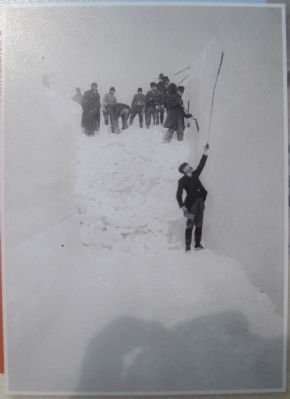
Photographed By Kevin W., July 4, 2012
9. Picture from the Frozen Over and Snowed Under Marker
"Snow birds," men hired to shovel snow too deep for the rotary, working on a slide near Uneva Lake in Ten Mile Canyon, west of Frisco in 1936.
Photo provided for use on the marker courtesy of the Dr. Clinton H Scott, John Manley collection.
Photo provided for use on the marker courtesy of the Dr. Clinton H Scott, John Manley collection.
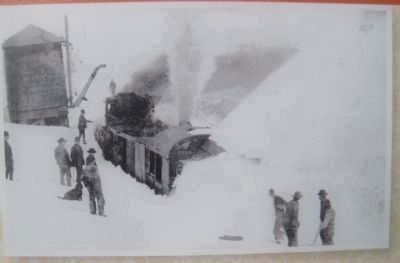
Photographed By Kevin W., July 4, 2012
10. Picture from the Frozen Over and Snowed Under Marker
Photos provided for use on the marker courtesy of the John (Bon) Oshier family collection.
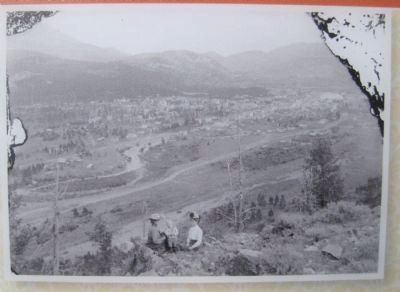
Photographed By Kevin W., July 4, 2012
12. Picture from the Frozen Over and Snowed Under Marker
Photo provided for use on the marker courtesy of the Dr. Clinton H Scott, Denver, South Park & Pacific Historical Society collection.
Credits. This page was last revised on June 16, 2016. It was originally submitted on January 8, 2013, by Kevin W. of Stafford, Virginia. This page has been viewed 654 times since then and 20 times this year. Photos: 1. submitted on January 8, 2013, by Kevin W. of Stafford, Virginia. 2, 3, 4, 5, 6, 7, 8, 9, 10, 11, 12, 13. submitted on January 13, 2013, by Kevin W. of Stafford, Virginia. 14. submitted on January 8, 2013, by Kevin W. of Stafford, Virginia. 15, 16, 17, 18. submitted on January 13, 2013, by Kevin W. of Stafford, Virginia.
